In the latest decades, mobile devices and ultimately smartphones have revolutionized the way we communicate and gather information. Nowadays mobile internet access and countless apps allow people to do almost anything and growingly continue to influence the way our society works.
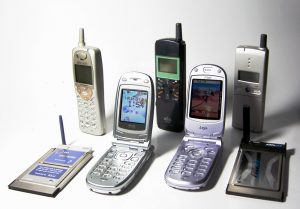
image source: https://en.wikipedia.org/wiki/History_of_mobile_phones#/media/File:Mobile_phone_PHS_Japan_1997-2003.jpg
Discounting earlier technologies like the unreliable WWI wireless field telephone, the accepted birthday for the cellular telephone is April 3, 1973, when Motorola employee Martin Cooper, dialled the number of Bell Labs in New Jersey from New York. Cooper used the Motorola DynaTAC 8000x, a product that wouldn’t go on sale to the public for another decade.

image source: https://en.wikipedia.org/wiki/Motorola_DynaTAC#/media/File:DynaTAC8000X.jpg
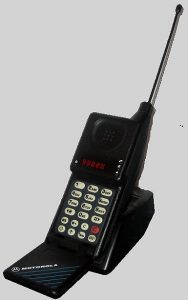
image source: https://en.wikipedia.org/wiki/Motorola_MicroTAC#/media/File:Motorola_MicroTAC_9800x.jpg
By 1979, Nippon Telegraph and Telephone (NTT) introduced consumers to the first mobile phone service, it was several years before the technology moved into the mainstream worldwide. Only by April 25, 1989, the Motorola MicroTAC 9800x showcased true mobility with its relatively compact size and flip-up mouthpiece.
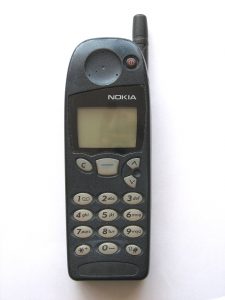
image source: https://en.wikipedia.org/wiki/Nokia_5110#/media/File:Nokia_5110.jpg
During the ’90s, The GSM standard established a common network across Europe and provided users with uninterrupted service even when they crossed borders. The first GSM phone, the Nokia 1011, which went on sale on November 9, 1992, also introduced text messaging.
When IBM’s Simon was released on August 16, 1994, it still was a bit early. You could send email, faxes and sketches on its touchscreen with the included stylus, consult the calendar, check a world time clock and an address book, but you could only navigate a watered-down version of the internet.
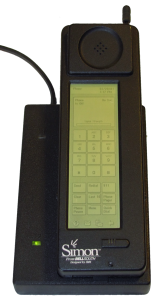
image source: https://en.wikipedia.org/wiki/IBM_Simon
NTT DoCoMo launched the first 3G network in Japan on October 1, 2001, making videoconferencing and large email attachments possible. However, the true smartphone revolution didn’t start until Macworld 2007, when Steve Jobs revealed the first iPhone: its large touchscreen could flip through websites just like a desktop computer, all while looking sleeker than anything consumers had ever seen before.
Mobile phones continued to improve until they became the smartphones we know, the worldwide use of which is expected to pass five billion by 2019. The 5G networks predicted for 2020 promise even faster speeds and increased bandwidth: experts think it may enable life-changing technologies like real-time telemedicine, virtual reality training and truly smart cities.
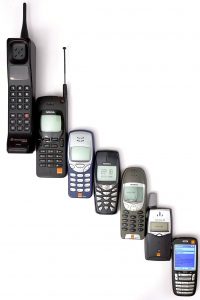
image source: https://en.wikipedia.org/wiki/Mobile_phone
info source:
https://sciencenode.org/feature/How%20did%20smartphones%20evolve.php
